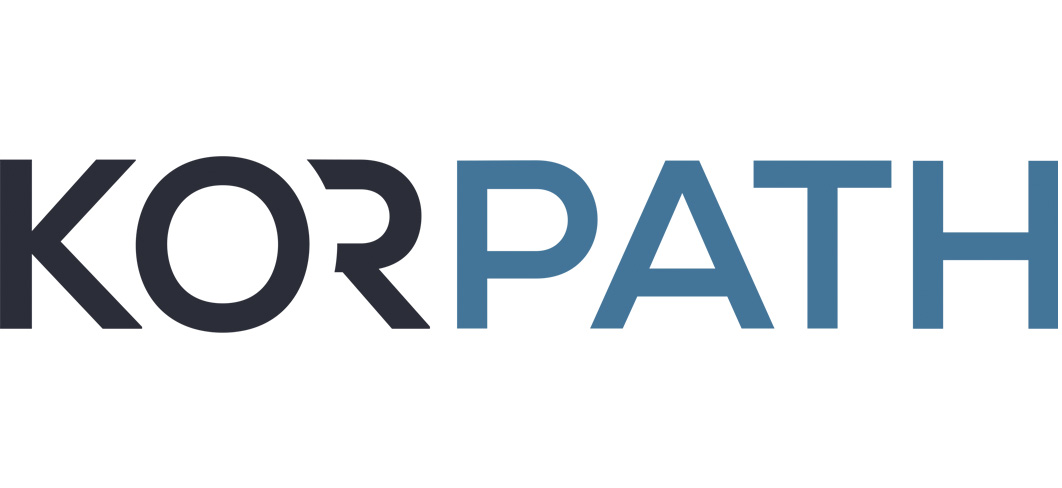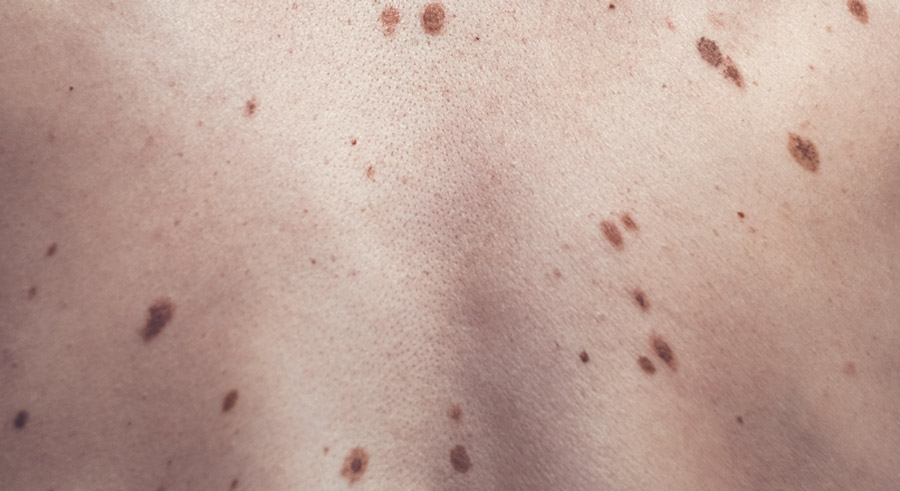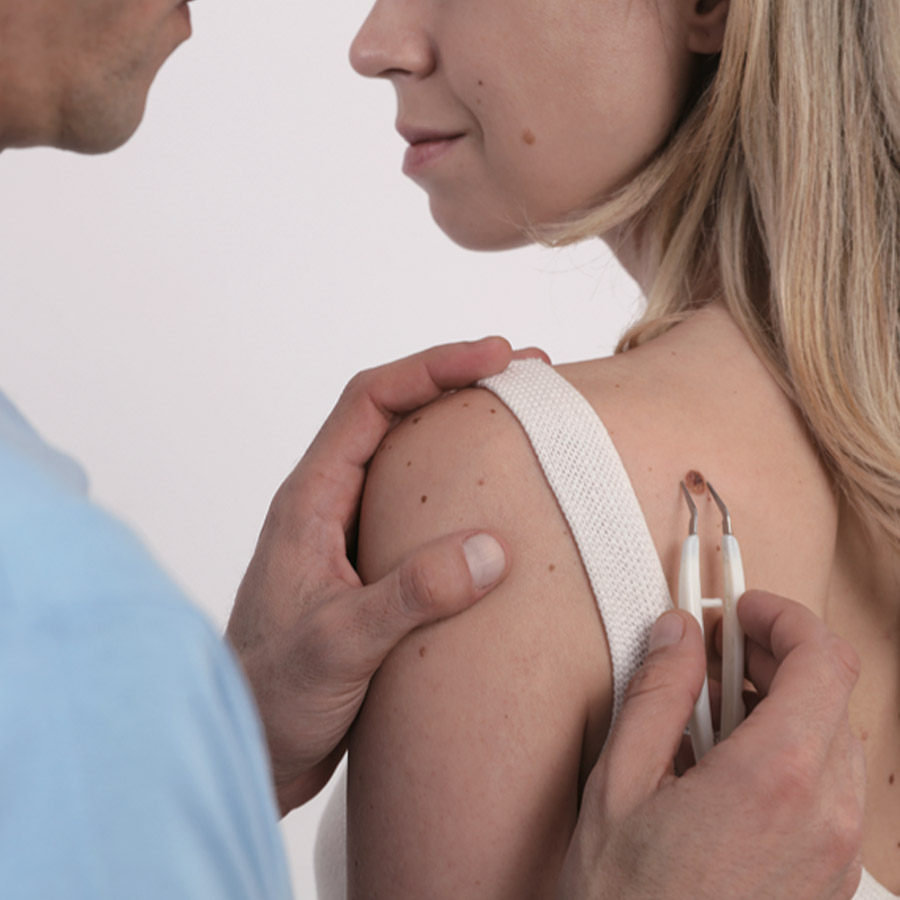Atypical Nevus, also referred to as a dysplastic nevus or an atypical mole, is a precancerous lesion that forms when melanocytes, the cells that produce skin pigment, form in clusters. Although they are benign, patients with dysplastic nevi carry a higher risk of developing melanoma, a serious form of skin cancer.
- Atypical nevi can resemble ordinary moles, but are typically larger ( 5 – 15 mm in diameter) and can vary in color from pink to dark brown. They typically have poorly defined edges and are often asymmetrical. Atypical nevi may also be flat or partially flat with raised pebbly areas. They are most commonly found, but not limited to, areas of the body exposed to the sun.
- Most atypical nevi do not evolve into melanoma. However, as the number of atypical nevi rise, so do the patient’s chances of developing melanoma. Also, those patients with atypical nevi and a family history of melanoma are at higher risk of skin cancers and their lesions should be monitored closely. Other risk factors include light eyes, hair and skin; freckles; numerous moles; and sensitivity to the sun.
- Patients who are at an increased risk of developing melanoma should be aware of and examine any moles on their skin surface regularly. If any of the moles change in size, shape, color or start to bleed, ooze or itch, they should consult their dermatologist immediately.
Treatment Options
lf your dermatologist suspects any of your moles may be atypical, а biopsy can be performed. The mole will be removed, often with the use of а local anesthetic. А dermatopathologist will then microscopically examine the sample and diagnose whether or not it is an atypical nevus.
Not all atypical nevi need to be removed, as very few atypical nevi turn into melanoma. Your doctor may recommend removing moles that show significant changes or display signs of melanoma. lf your doctor does recommend removal, the typical nevi can be treated by:
lf you are diagnosed with an atypical nevi, it is recommended to have your doctor perform a thorough skin examination and advise family members to do the same.
How Can We Protect Ourselves?
Avoid overexposure to sunlight.
Following sun protection guidelines can help reduce the risks associated with atypical nevus, especially between the hours of 10 am and 4 pm when the sun is directly overhead. It is important to remember that, even on overcast days, damaging ultraviolet rays can pass through clouds. Use caution when around water, sand, and snow because all can reflect the sun’s rays.
Take protective measures.
Wear broad-brimmed hats, tightly-woven clothing, and sunglasses.
Use sunscreen.
Choose a sunscreen with minimum SPF (Sun Protection Factor) of 30 with protection from both UVA and UVB rays. Reapply often on all exposed skin, including the lips.
Always avoid tanning and never use UV tanning beds.
Check your skin regularly.
Examine your entire body, and report any suspicious lesions to your dermatologist.
Self-Examination
- It is important that you examine your skin closely once a month. The development of skin cancer can often be avoided by early detection.
- Examine your entire body by using mirrors. Look for slow-healing sores or areas that continuously itch or are painful. Pay close attention to moles or spots that change in shape, size, or color.
- If you see something unusual, make an appointment with a dermatologist as soon as possible.





